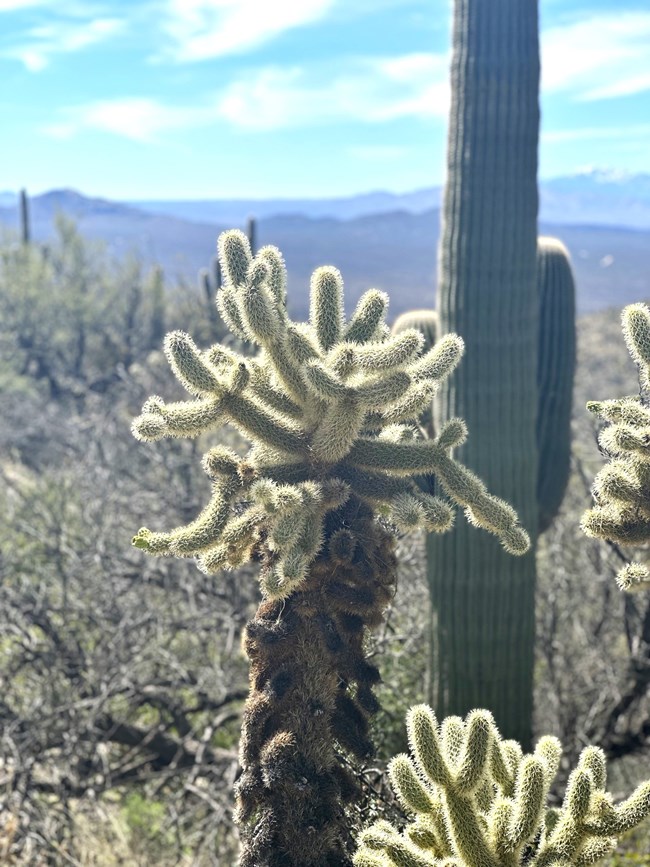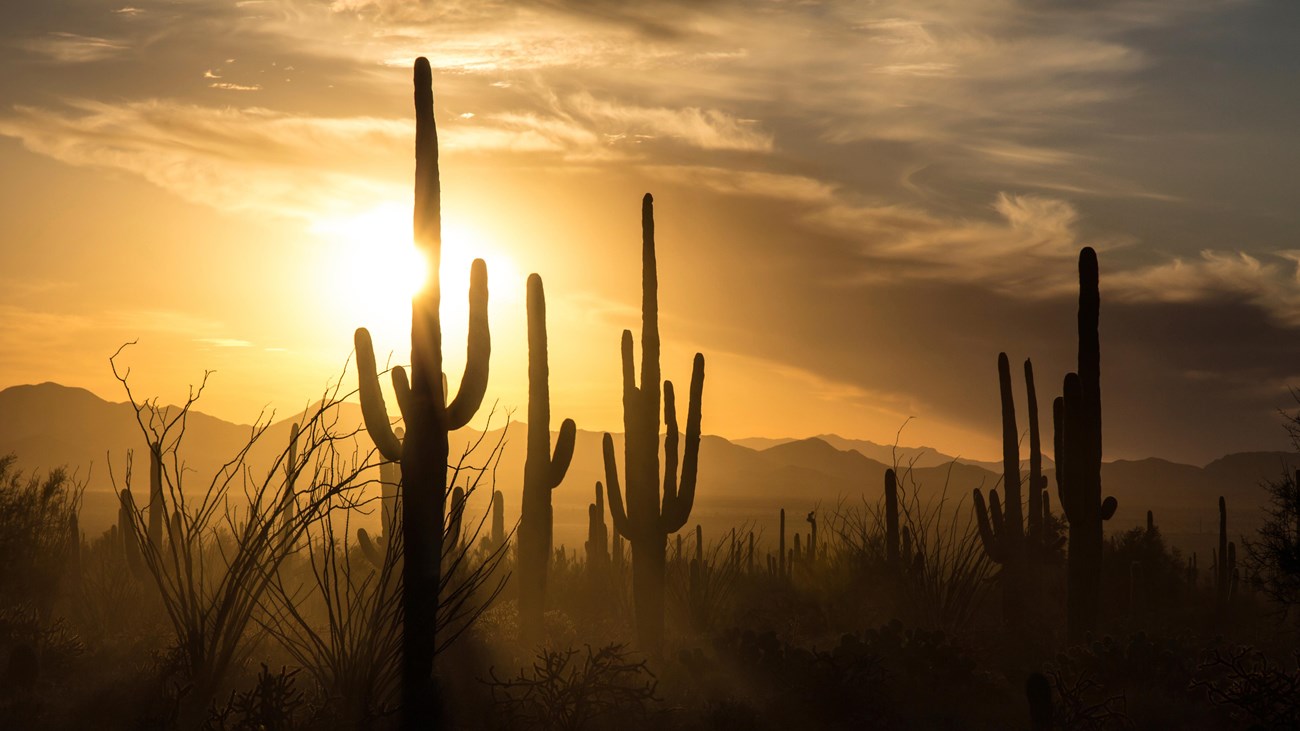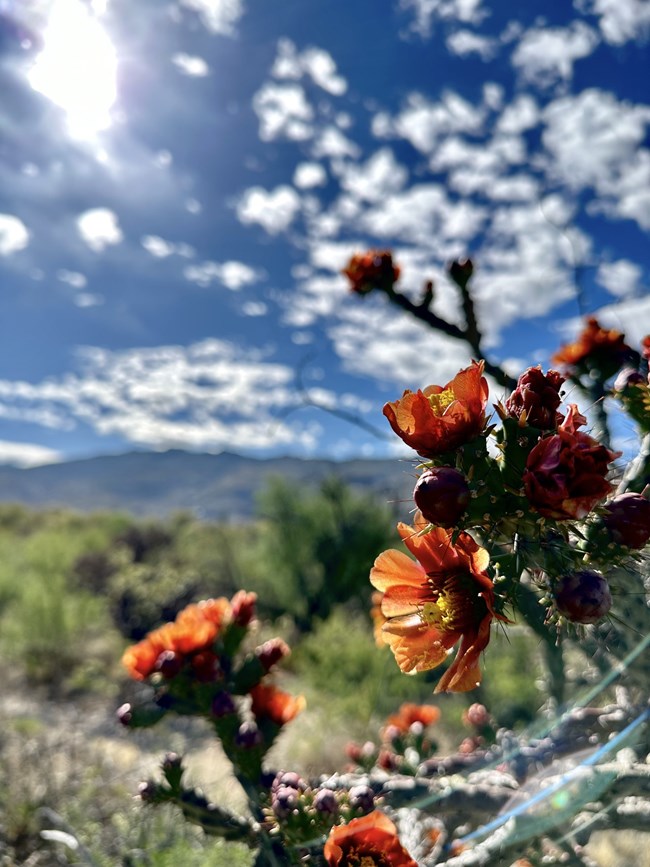Fantastic CactiThe cacti of Saguaro National Park are a diverse group of plants, ranging from the tiny fishhook pincushion to the massive and majestic saguaro. Not only does the Sonoran Desert offer an amazing variety of cactus species, it also exhibits some of the most fascinating adaptations in the plant world. Adaptations are what enable the cactus plants to thrive under harsh conditions of desert: extreme heat, nearly constant sun, and scarity of water throughout most of the year. AdaptationsAdaptations are what enable the cacti you see all around you to thrive under the harsh conditions of the Sonoran Desert. Plants must adapt to the extreme heat, constant sun and scarce water, or they will die. 
NPS Photo / T. Wiewel SpinesThe most conspicuous adaptation of the cactus family is the spines, which are modified leaves. In addition to protecting the plant from hungry or thirsty animals, spines provide shade during hot summer days and warmth on cold winter nights. Spines also help prevent water loss that occurs due to dry winds. Roots and StemsAs with most desert plants, cacti have a shallow root system. These shallow roots enable cacti to capture the rainwater from even the lightest showers. GrowthAs with most plants, cacti make their food through a process called photosynthesis. However, unlike most plants that only take in carbon dioxide during the day, cacti utilize a complex form of carbon dioxide fixation known as Crassulacean Acid Metabolism, or CAM. This method reduces the amount of water lost to the atmosphere because the pores on the plant's skin (called stomata) open only at night when desert temperatures are lower and humidities are higher. 
The Saguaro Cactus
Learn about our giant cactus, the majestic saguaro! Saguaro National Park Cactus ListWalk the cactus garden at either visitor center to find signs identifying native desert plants. The Valley View trail in the Tucson Mountain District (west) and the Freeman Homestead trail in the Rincon Mountain District (east) also have identification signs. Park gift shops carry a number of identification guides. A book specific to our many species of cacti is "Cactus of Arizona Field Guide" by Nora & Rick Bowers and Stan Tekiela, Adventure Publications, 2008.

NPS photo / T. Wiewel Play it Safe with SpinesCacti are armed with an assortment of sharp spines. They vary from tiny, hair-like glochids to large, curving hooks to 3-inch spears. Whichever type you bump into, spines can pose a painful hazard to the unwary desert enthusiast. |
Last updated: May 6, 2025
